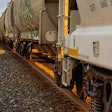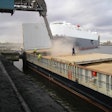
There’s a head of steam in Washington to press for Congressional approval of a comprehensive infrastructure package. Will we be able to see it get passed this year? Moreover, what will be in such a package? It’s anyone’s guess.
Focusing on priorities for the food and agriculture industries may be our best strategy, while understanding we are going to need to partner wherever we can to move a package with broader appeal up a very steep mountain.
We all know the big barrier — cost. Who pays for it and how? That is where this climb gets steep and the cost of the recently passed tax legislation has not made the task easier.
The Trump Administration released its “Legislative Outline for Rebuilding Infrastructure in America” that proposes $200 billion in federal funding, which is intended to spur $1.5 trillion in new infrastructure funding (some experts say more than $3 trillion is actually needed). The other $1.3 trillion would come from state, local and private money to be determined later.
The administration outline calls for concepts that spur more private sector funding including an “incentive program” to attract nonfederal revenue. This sounds good at first, however, it’s not always suitable.
There will need to be compromise and bipartisanship to get an infrastructure package passed. The closer we get to the midterm elections, the harder those compromises become.
There are some hopeful signs. A “Rebuild Rural” coalition is pulling together broad support for advancing rural infrastructure needs, from broadband and waterways to roads, plus more.
I do get concerned about rural versus urban conflicts when it comes to transportation funding. The fact is many of those urban transport projects benefit rural constituents too.
For ag exporters that ship by containers like many Midwest Shippers Association members, the most pressing problems now are in trucking — the cause mainly being chronic highway congestion around key intermodal facilities.
Fixing metro congestion, keeping freight corridors moving and maintaining bridges — both urban and rural — are critical for all citizens including ag shippers.
So too would seeing adequate funding for critical rail corridor improvements — notably in Chicago.
There are some clear priorities for us in agriculture. The funding for maintenance and rehabilitation of our aging locks and dams system ranks near the top; then reliable dredging for waterways and improvements at certain ports; and rural broadband to support state-of-the-art technology for businesses.
There will, however, need to be real compromise. There is some momentum now. The costs are huge. So too are the costs of doing nothing.













